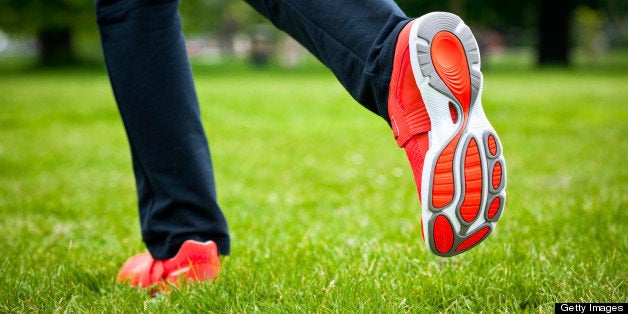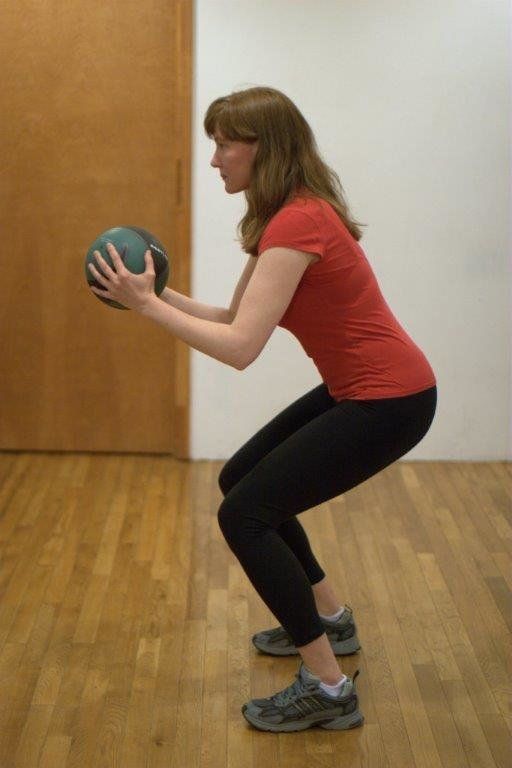
The advent of kids playing sports and often time one sport all year round has become, in a word, dangerous. When I was a kid, I played soccer in the fall and baseball in the spring and summer. I would train in the off-season for both sports, mainly consisting of weight training and some cardiovascular fitness. As Dr. Robert Marx from the Hospital for Special Surgery aptly puts, young athletes today are no longer benefiting from the seasonal break and instead are expected to practice their sport year-round. As Dr. Marx states, these are driven by a joy and desire to excel at his/her sport, but over time we are seeing the risks may start to outshine the benefits.
Injury to the anterior cruciate ligament (ACL) is one of the most devastating and potentially functionally debilitating to the athlete's knee. The ligament is intra-articular (inside the joint) and plays a significant role in maintaining stability to the knee with quick stops, change of direction or rotational movements. The frequency of ACL tears has become an epidemic in the young athlete. Approximately 200,000 ACL injuries occur annually in the United States, leading to nearly 100,000 ACL reconstruction surgeries. Although the surgical approaches are more advanced compared to a decade ago and have excellent outcomes, there still is a tendency for earlier arthritic changes in the surgically repaired knee.
The female athlete requires special consideration as the vast majority of ACL injuries occur without contact. Researchers have reported that female college basketball players were eight times more likely to injure the ACL than their male counterparts. Others have reported that female soccer players were six times more likely to sustain an ACL injury than male soccer players. There are similar data for other sports such as volleyball and gymnastics. Females have some unique anatomical features that may predispose them to injury, including increased genu valgum (knock-knee alignment), a poor hamsting-quadricep strength ratio, running and landing on a more extended knee, quadriceps-dominant knee posture, and hip/core weakness. It has been hypothesized that hormonal changes associated with the female menstrual cycle may also play a role due to the release of relaxin hormone that induces added laxity to the body's ligamentous tissues.
As a physical therapist in NYC, I treat these athletes postoperatively after their reconstruction has been completed. Current rehabilitation programs following ACL reconstruction are more aggressive than those utilized in the 1980s. Current programs emphasize full passive knee extension, immediate partial weight-bearing, and functional exercise. The rehabilitation program will be modified based on the type of reconstruction whether the patient had a reconstruction using their patellar tendon verses hamstring. The main differences between a normal and accelerated program are the rate of progression through the phases of rehabilitation and the recovery time prior to resuming running and athletic endeavors. Even with the accelerated program it may still take six months for the athlete to begin premorbid athletic activities, and in some cases nine months to a year. It is also essential to train the uninvolved side during the course of the patients' rehabilitation, as there is a 15 percent occurrence once the patient has an ACL tear of tearing the other side upon returning to play.
The common mechanism of non-contact ACL injuries is a valgus stress with rotation at the knee, which put simply means the knee is bowing inward on landing or cutting instead of being aligned properly. This valgus load can often be associated with a rotational stress at the knee, thus, it is vital for the female athlete to learn through neuromuscular training exercises to control this valgus moment. Physical therapist Tim Hewitt was one of the first to study the effect of neuromuscular training on the incidence of knee injury in the female athlete back in 1999. His hallmark study has led to more research and helped lead the way for more preventative exercises to hopefully help decrease the ACL epidemic especially in the female athlete.
Those patients with diagnoses related to their lower extremities, whether they be a competitive athlete or a weekend warrior, receive an integrated preventative programs as appropriate for their specific goals. Before assessment of the knee, however, we also look at strength of the hip and the foot alignment of the patient. Someone with a flat or pronated foot may be more predisposed to knee issues due to the affect it has on rotating the tibia bone internally potentially increasing the valgus moment above. In some cases arch supports or custom-made orthotics may be prescribed. Some overlapping components are the following: working on a strong core, including exercises to build the abdominals, gluteals and abductors as well as hip external rotator group. These muscle groups are essential in controlling the valgus loads that can induce the ACL injury. In addition, education on optimal knee alignment that emphasize weight-bearing control to maintain the knee over the second toe is critical. Exercises designed to control this movement are: front/lateral step downs (single leg squat), squat, and lunge that the knee stays even with the second toe as one bends the knee. Balance and perturbation training is critical to progress again with alignment always in mind to control the valgus moment while trying to challenge the athlete/patient with dynamic stability drills. These drills can be either on the floor balancing on one leg, to catching a ball and standing on an uneven balance board from different angles for difficulty.
Once the female athlete demonstrates good neuromuscular control and strength of the aforementioned exercises, then she can progress to more sport-specific tasks emphasizing proper plyometric drills with a flexed knee and landing again with proper alignment. This can be initiated on our pilates reformer and gradually increased with spring resistance and then progressing to an upright position and land with body weight, such as during a jump squat exercise. It is essential to work on the eccentric or lengthening phase of contraction in a functional manner (weight-bearing) with the female athlete to help control the adduction and internal rotation (pulling inward) forces on the thigh/knee.
These neuromuscular exercise concepts of controlling malalignment with cutting, landing and functional weight-bearing training are crucial to helping the athlete better protect themselves on the field. Better dynamic stability via training in the pre-season will hopefully decrease the amount of ACL injuries over the next season. The key is to make certain the athlete is training properly and aware of landing correctly. If they are not landing properly while exercising, they will be feeding into the problem and possibly inviting ACL issues.
Michael Zazzali is partner of Physical Therapy Associates of New York, LLC located in Manhattan, N.Y.
For more by Michael Zazzali, click here.
For more on personal health, click here.
